Image Analysis Services
Access expert capabilities to turn stained tissue into actionable insight
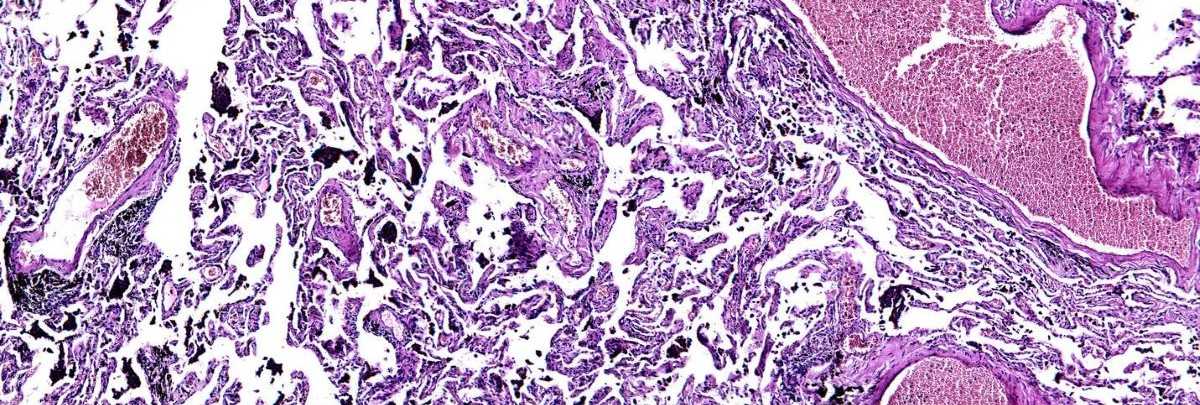
Histological staining alone does not yield quantifiable results. Our leading digital image analysis capabilities transform stained tissue sections into robust, reproducible datasets that provide clear biological insight.
Using state-of-the-art Visiopharm® software and custom AI-powered algorithms, we extract and interpret complex spatial and molecular data at scale. Explore how our image analysis capabilities can provide robust insight to guide your next steps and propel your drug discovery and development forward.
Robust image analysis is essential to generate insight and identify the most effective next steps for biomarker validation, immuno-oncology profiling, and drug response assessment. Whether slides are generated in-house or externally, our digital analysis process supports confident, data-driven decisions across discovery and development.
We can help you:
- Extract reproducible data from single-marker stains, multiplex immunofluorescence, or RNA in situ hybridization
- Interpret images from simple histopathology stains to complex multiplexing
- Apply tailored AI and deep-learning algorithms to address specific biological questions
- Quantify cell types, marker expression, spatial relationships, and treatment effects across tissue types
Each project is supported by an experienced team, who use their expertise to recommend assay design, algorithm selection, and data interpretation; ensuring efficient and robust dataset generation that aligns with the scientific objectives of the study. We have extensive experience working with a wide range of tissues and samples including mouse, rat and human, from very basic chromogenic stains to complex fluorescent multiplexing.
Typical image analysis workflow

Image analysis workflows are custom-built to meet the demands of the study, and support a range of preclinical and clinical applications:

Biomarker image analysis
We provide quantification of biomarker expression at the cellular level across a wide range of tissue types, including TMAs. Applications include:
- Digital quantification of protein and RNA biomarkers
- Localization of marker expression within defined tissue structures
- Detection of biomarker variation across disease states or treatment groups
Immuno-oncology image analysis
A suite of automated tools supports in-depth profiling of the tumour microenvironment:
Tumour morphology segmentation
Differentiation of tumour, normal and tumour associated stromal, and necrotic areas using H&E or fluorescent markers.

Cell phenotyping with AI and Deep Learning
Classification and quantification of cells based on biomarker expression:
- High-accuracy cell identification
- Marker quantification at scale
- Spatial phenotyping within the tissue
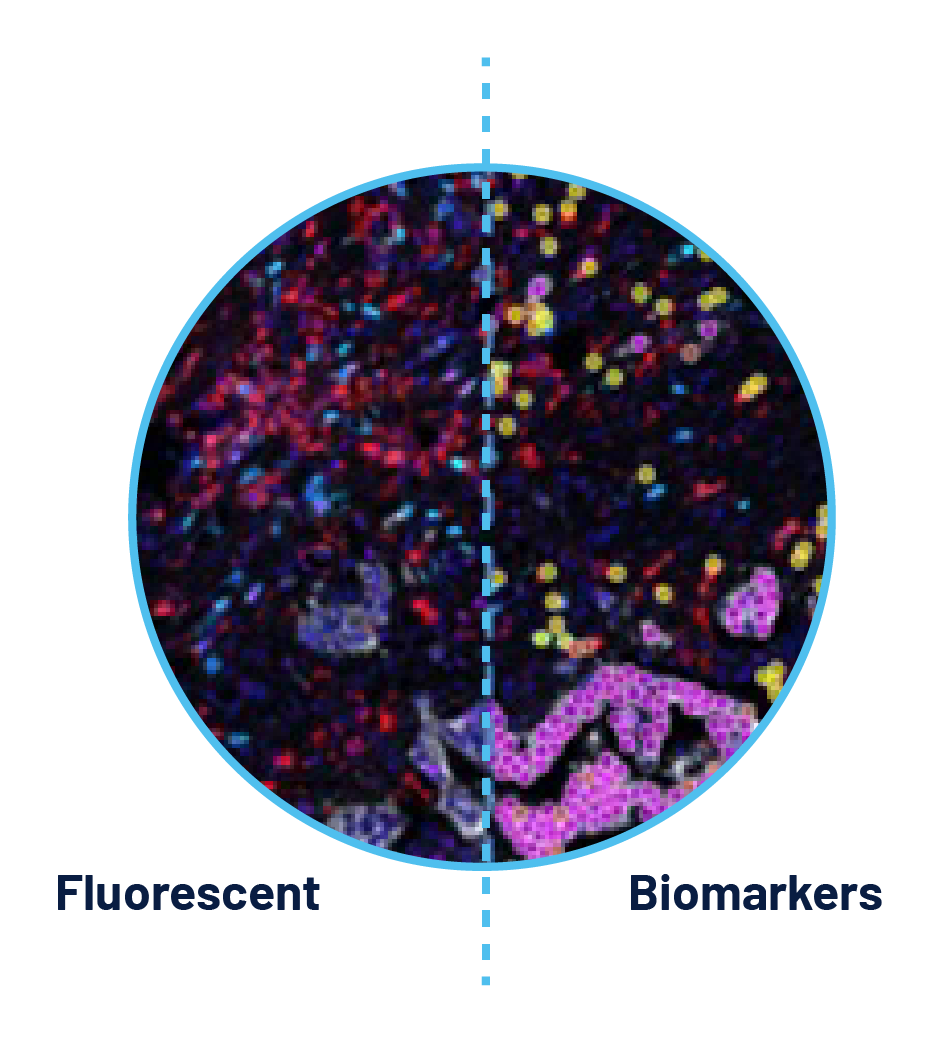
Immune cell infiltration and proximity analysis
Quantification of immune cells relative to tumour and stroma boundaries:
- Immune infiltration and exclusion
- Proximity of immune cells to tissue compartments
- Distance metrics between cell types and tissue landmarks
- Nearest neighbour analysis
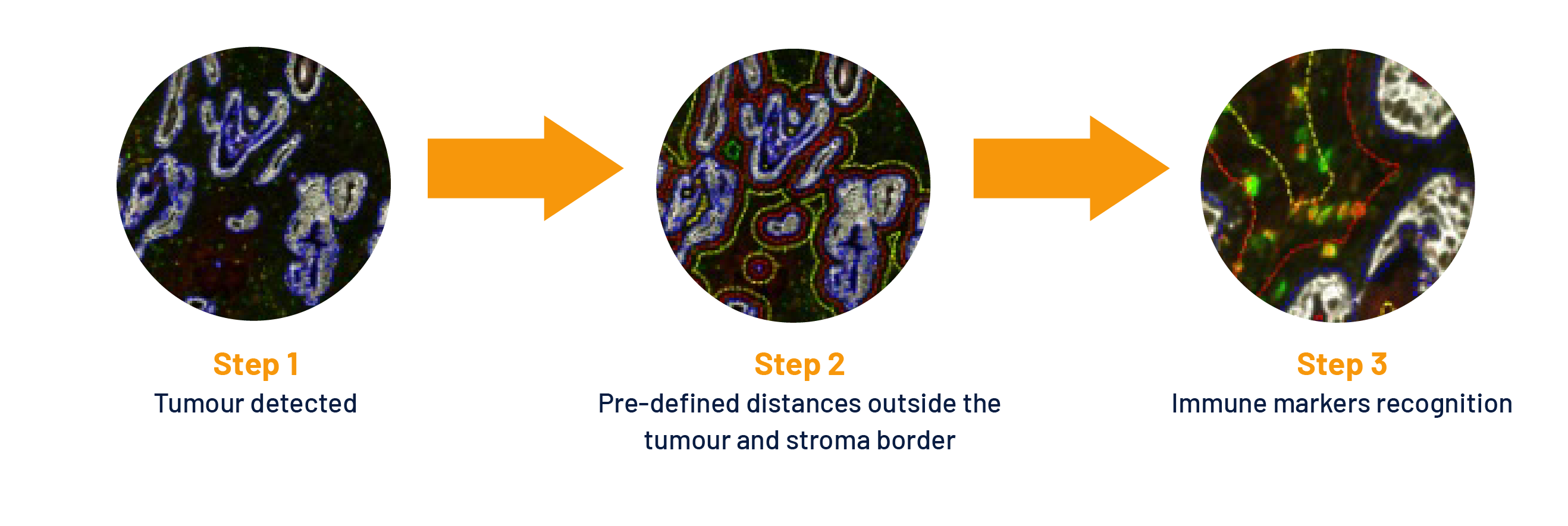
Cell spatial analysis
Analysis of cell–cell interactions and distribution to understand mechanisms of action and tissue organisation:
- Immune cell proximity to vasculature
- Effector–regulatory cell clustering or exclusion
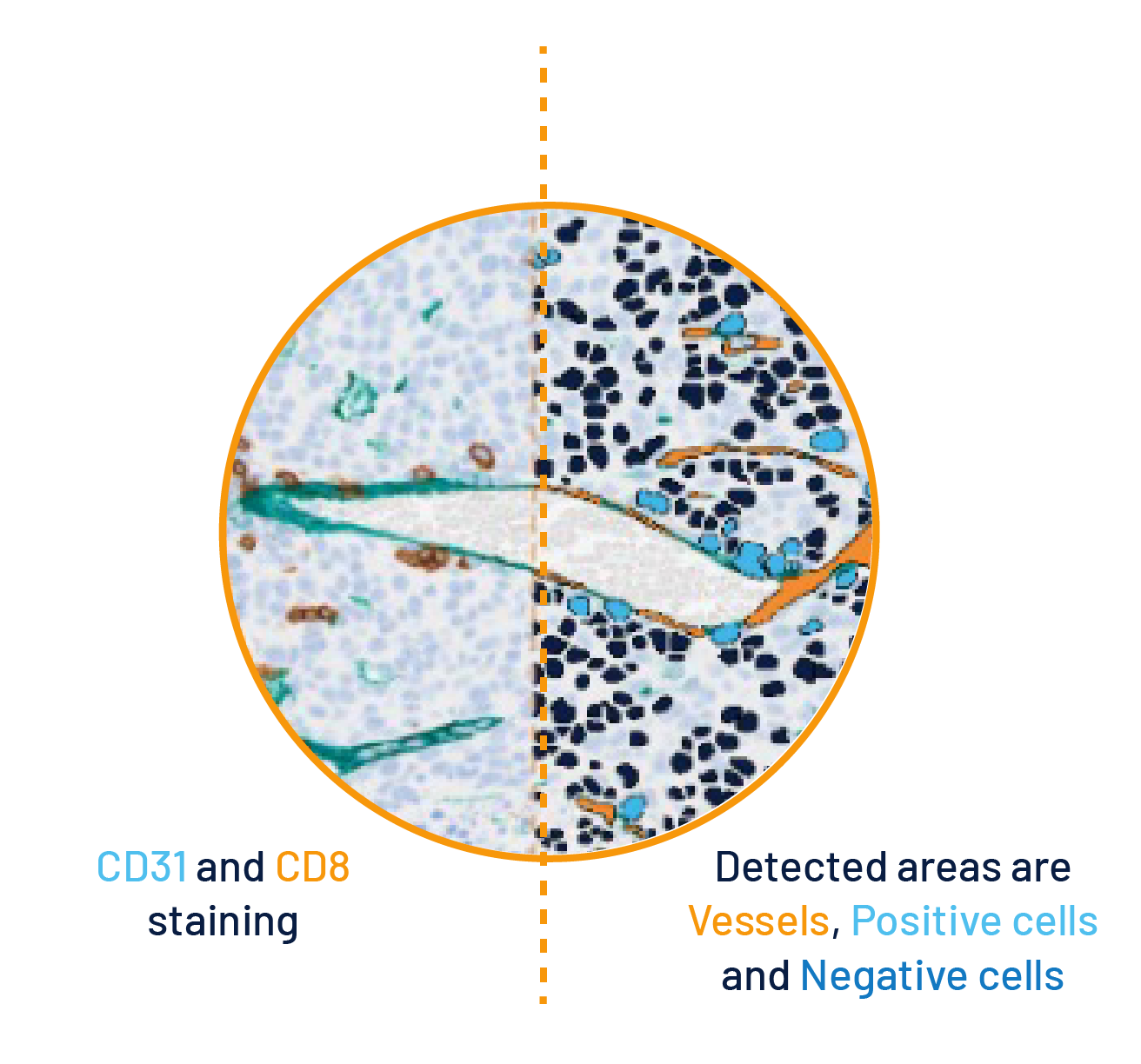
RNA in situ hybridization image analysis
Quantitative analysis of spatial RNA expression using in situ hybridization -stained tissue:
- Detection of heterogeneous expression patterns across tumour regions
- Quantification of multiple RNA targets (with or without protein co-stains)
- Spatial distribution and density mapping of transcripts
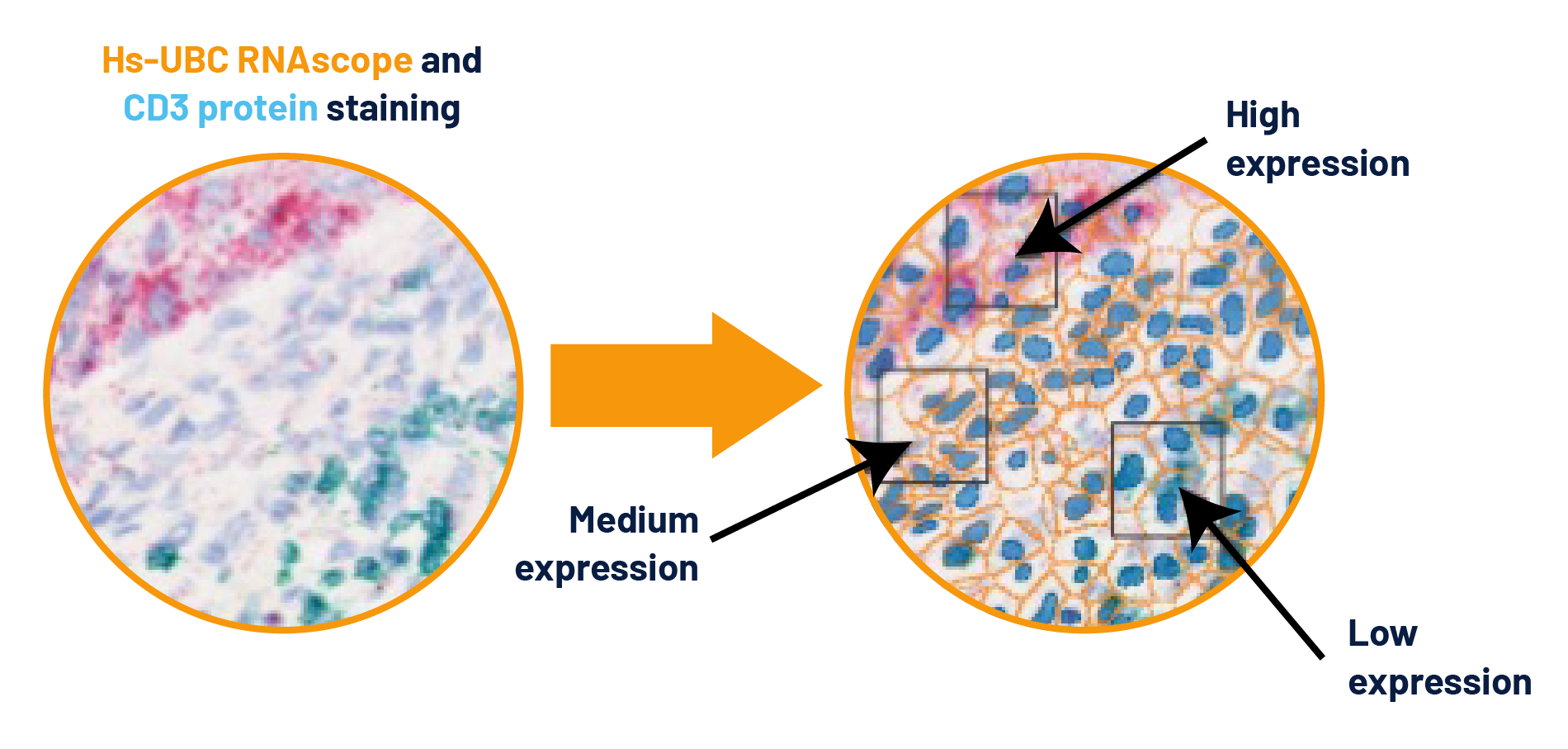
Explore More Spatial Biology Services
Our IHC and ISH services integrate seamlessly with our broader spatial biology offering:
